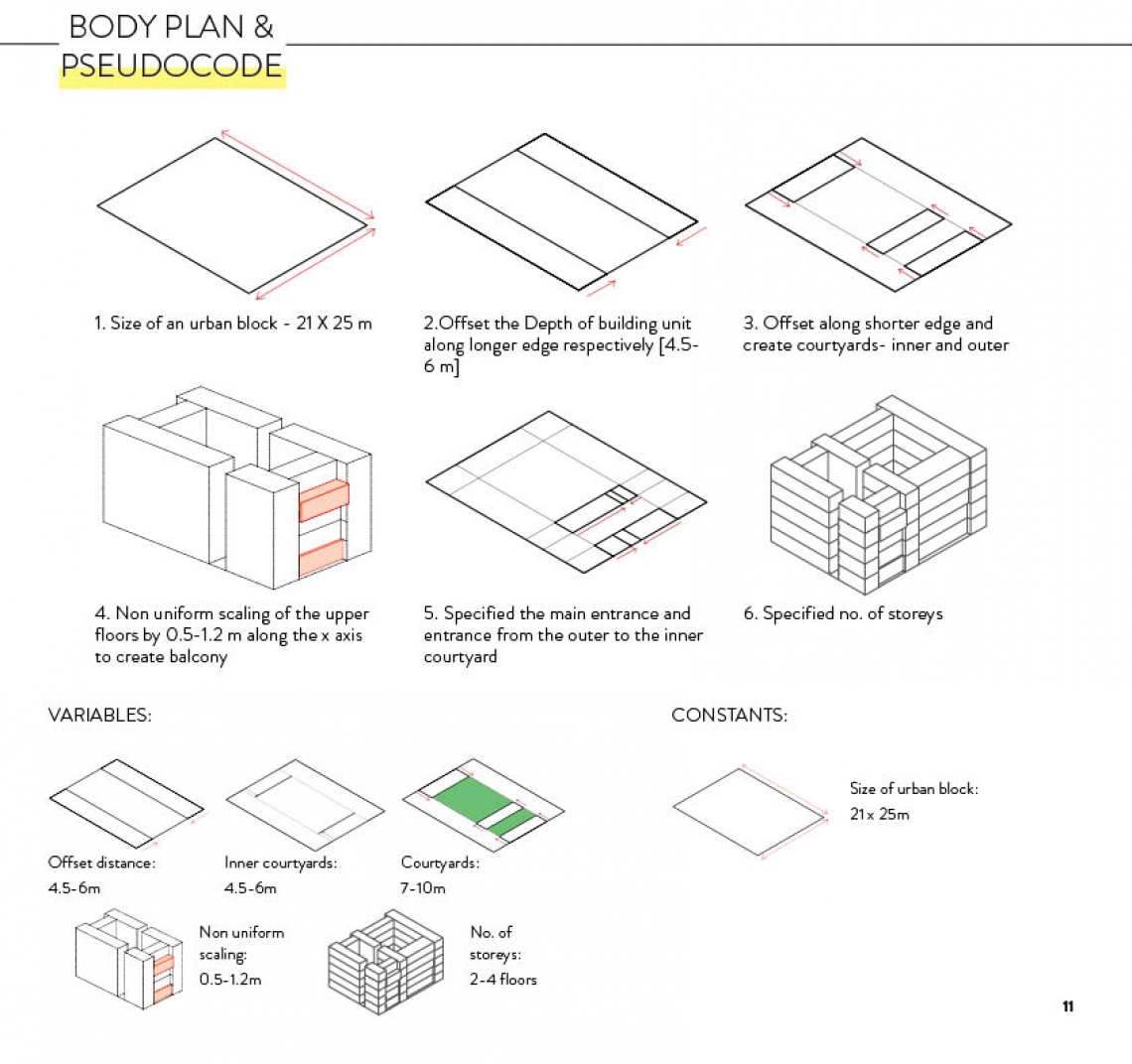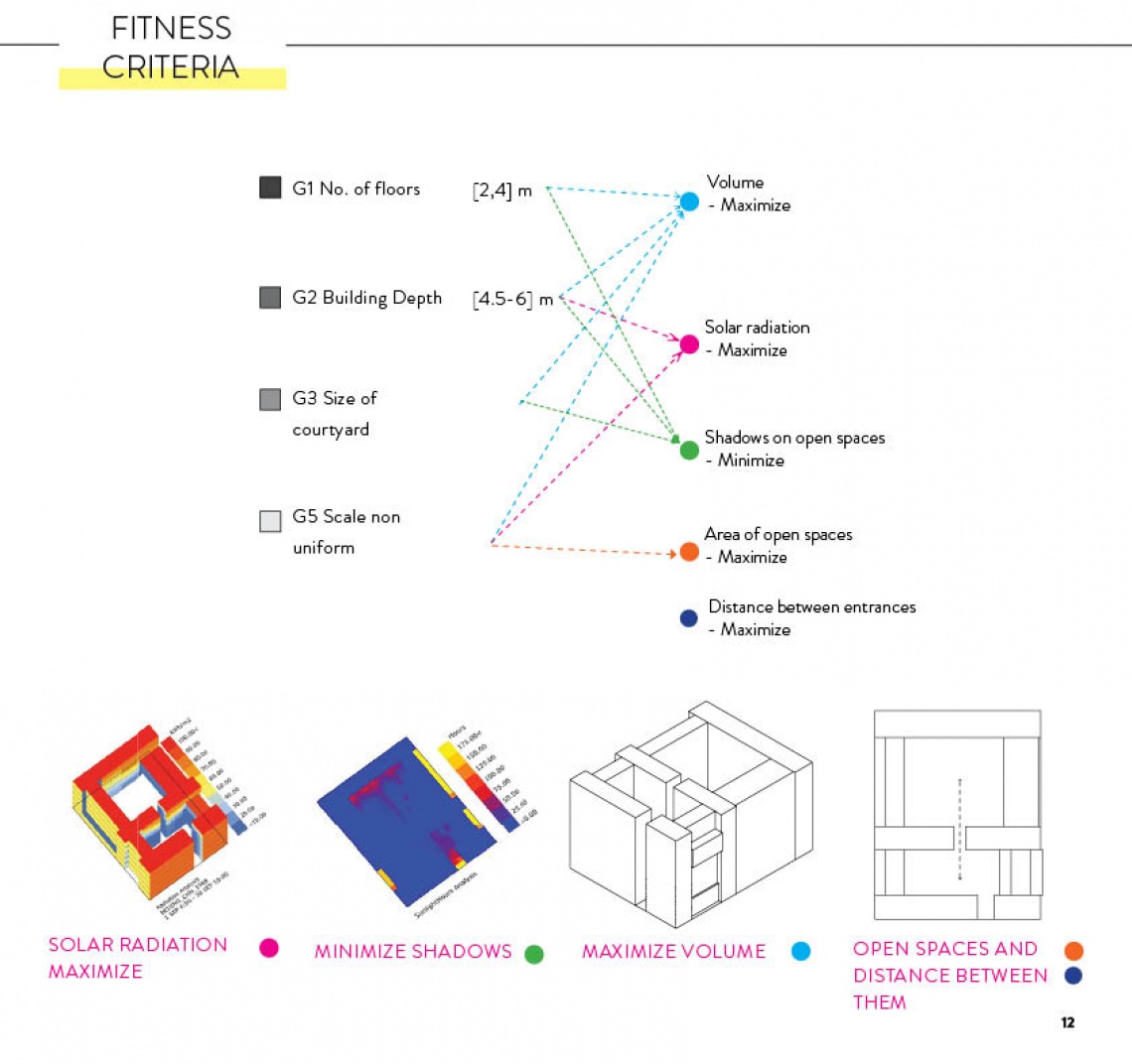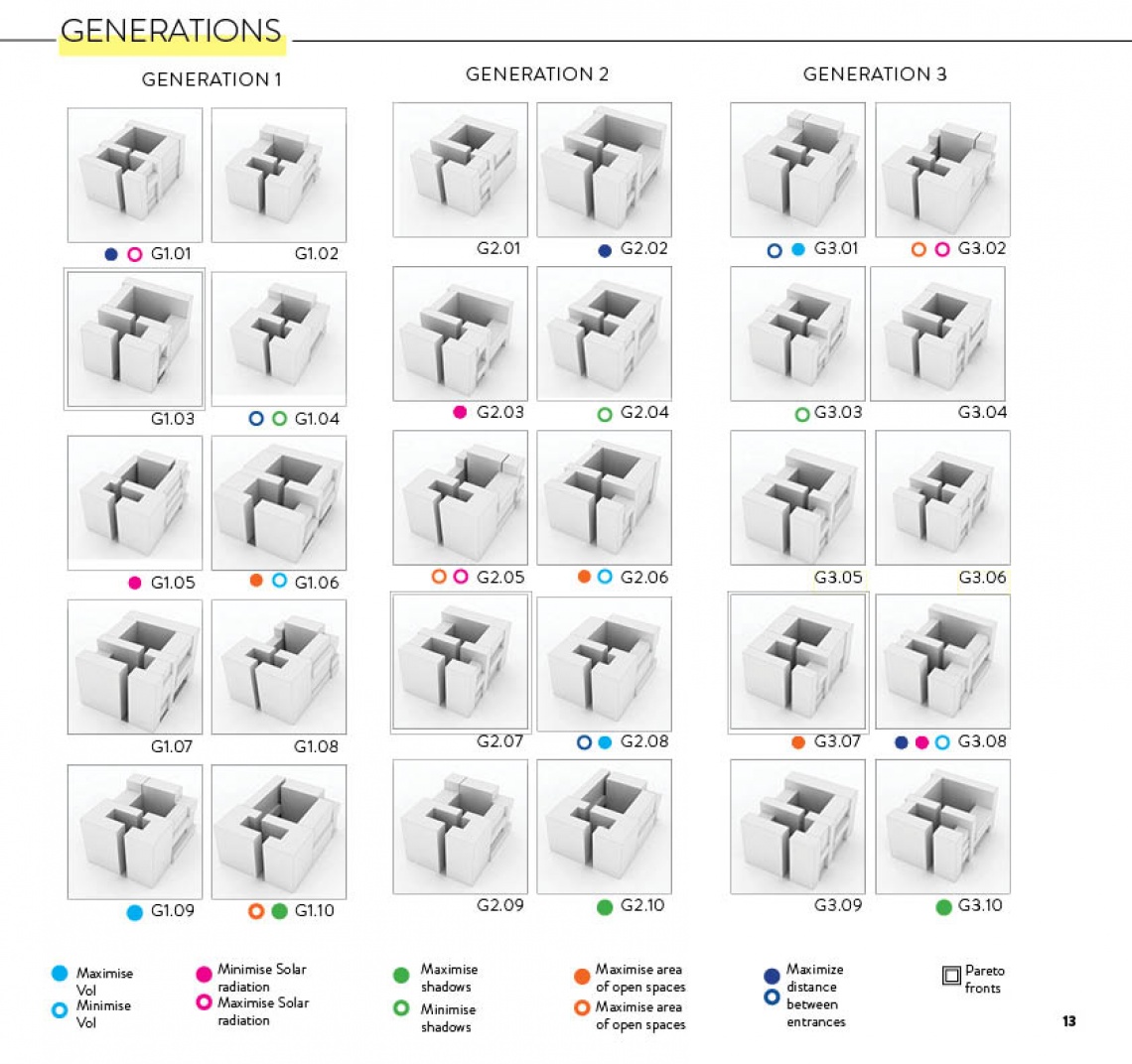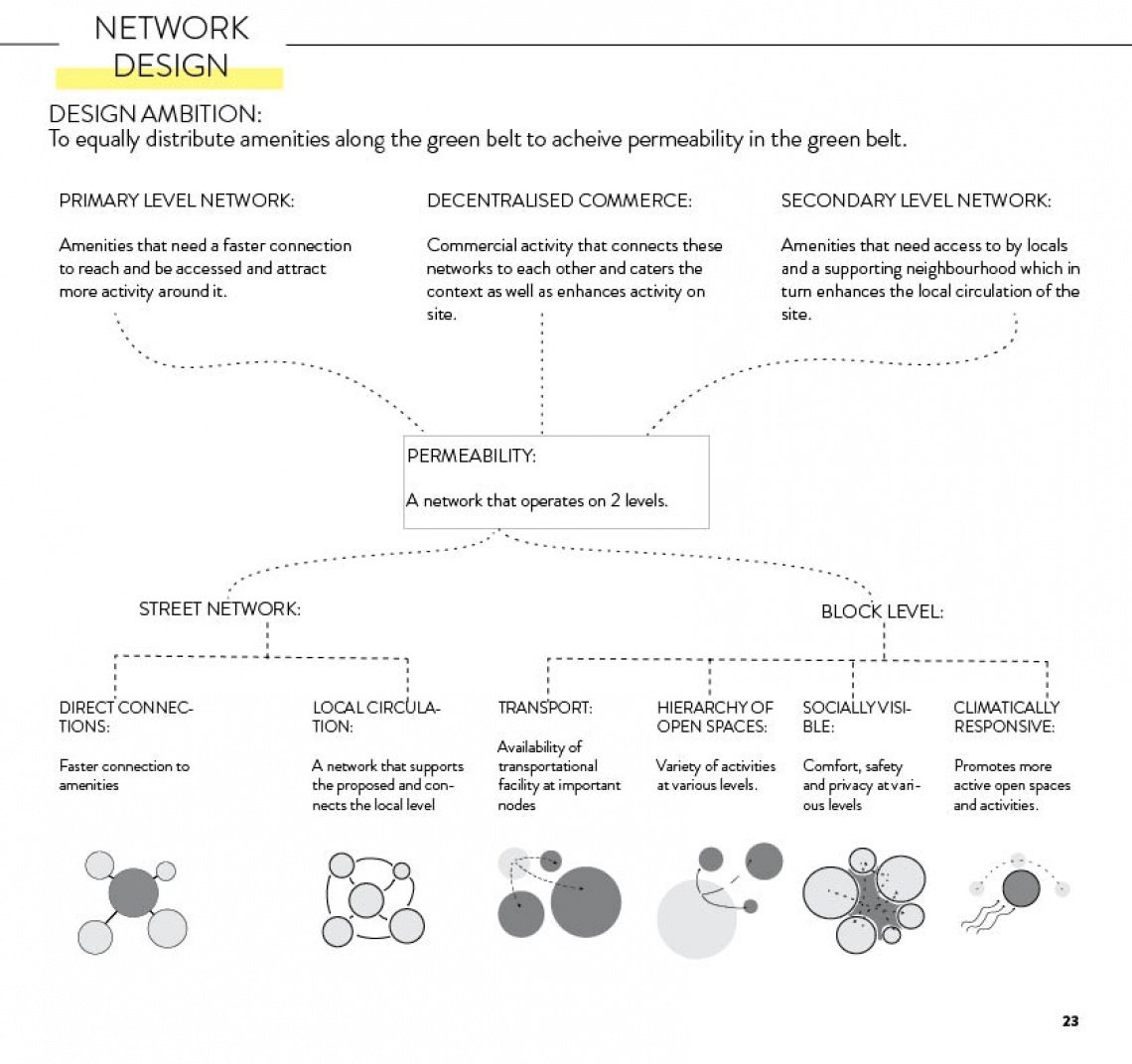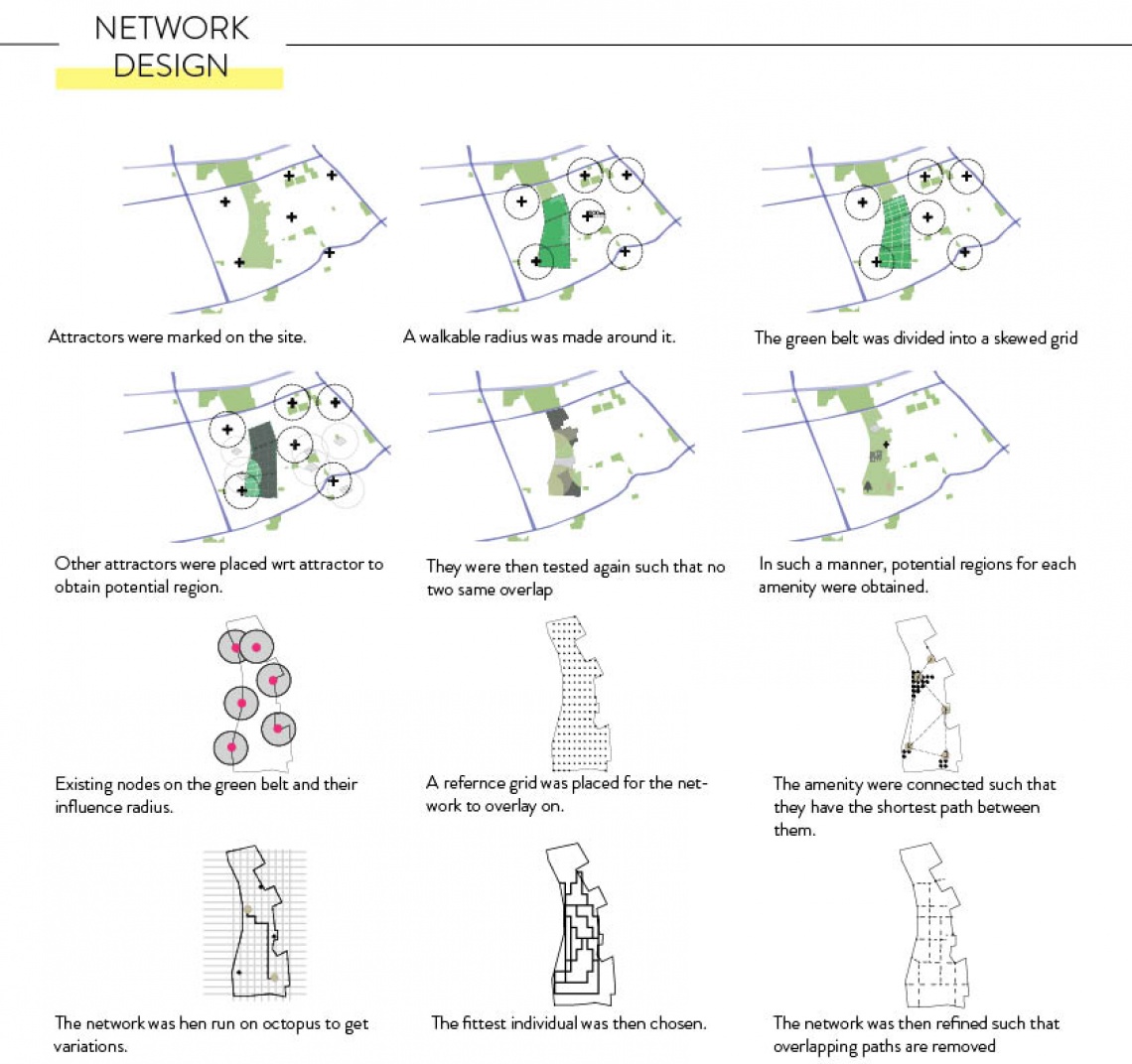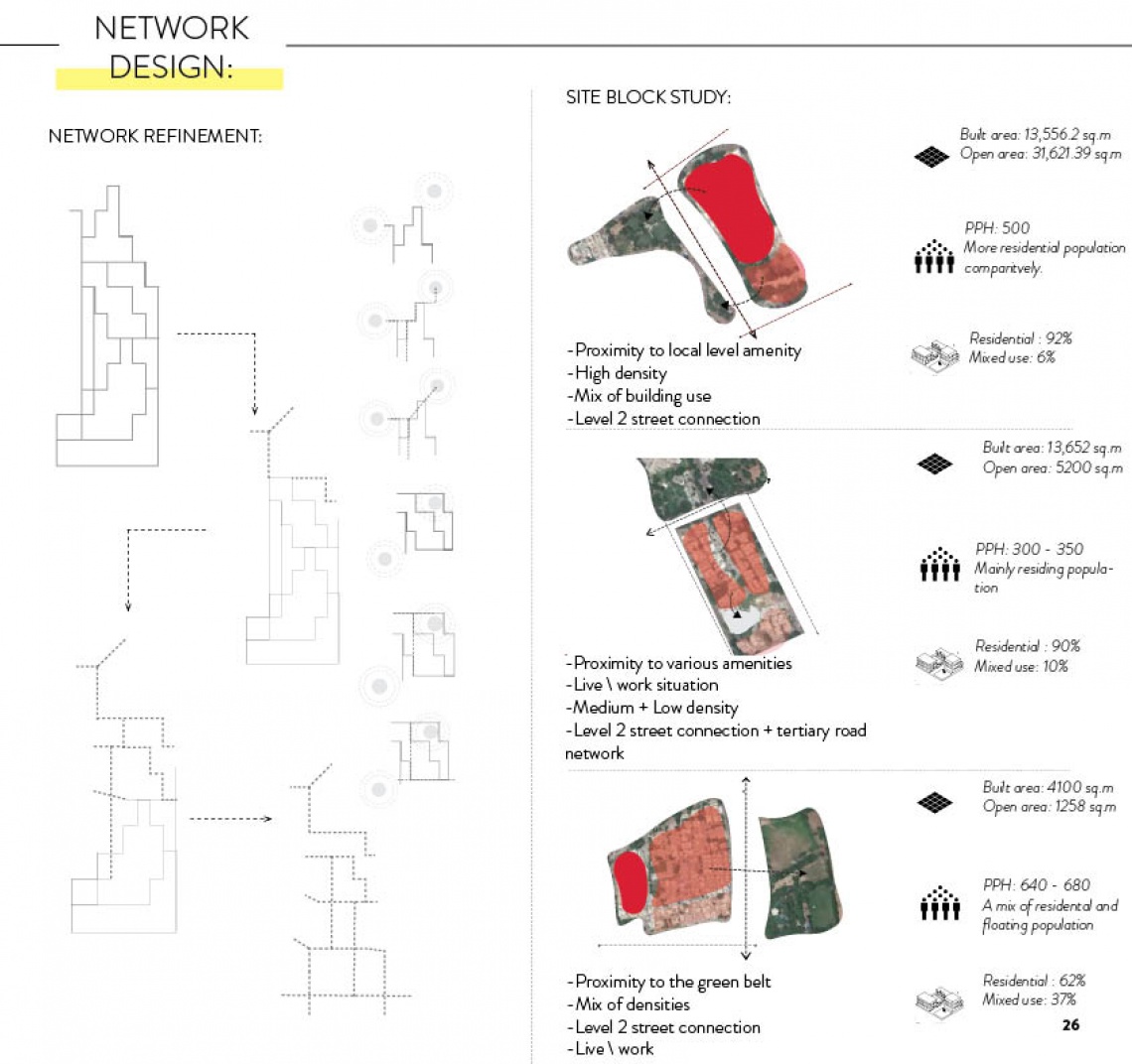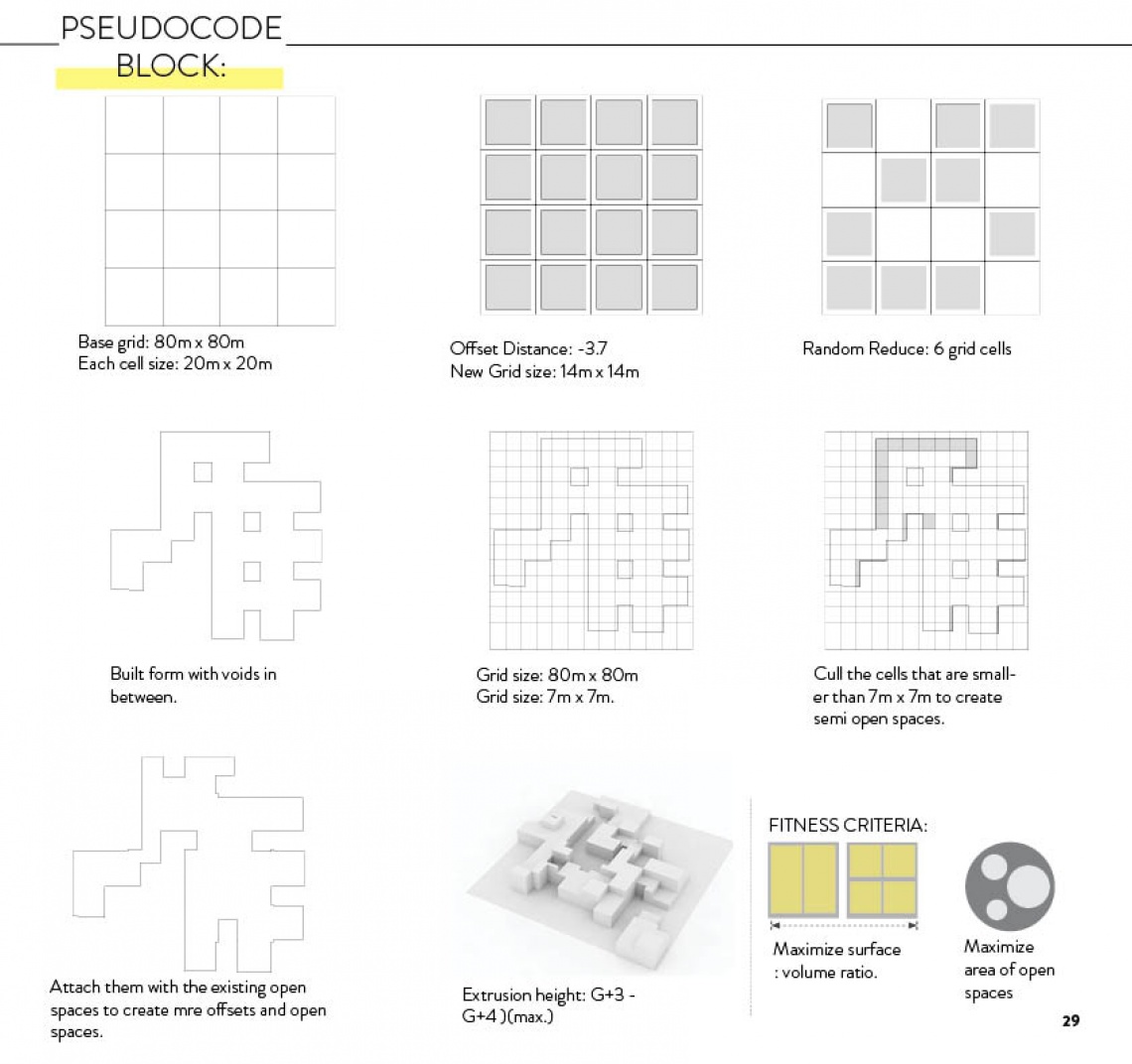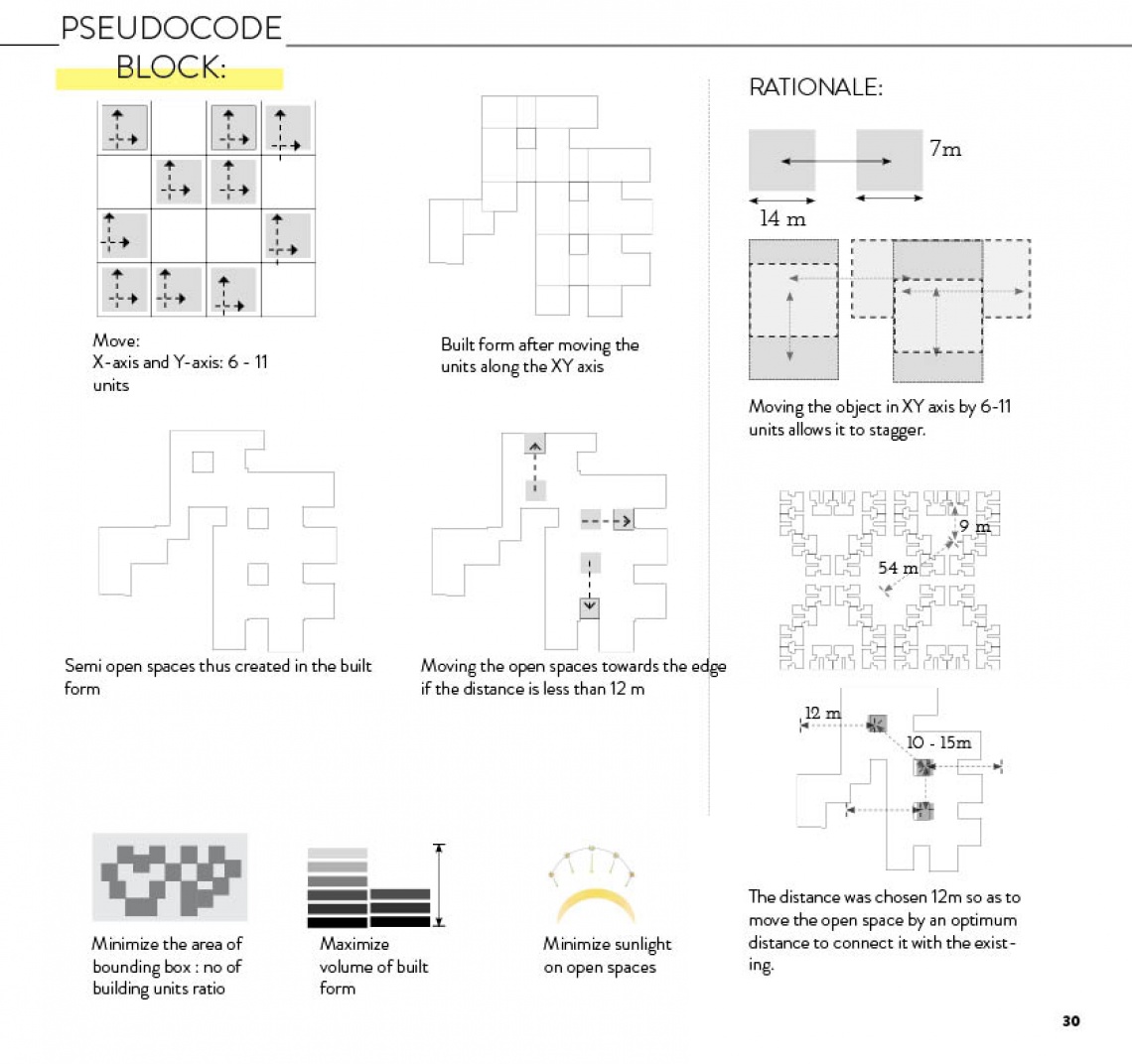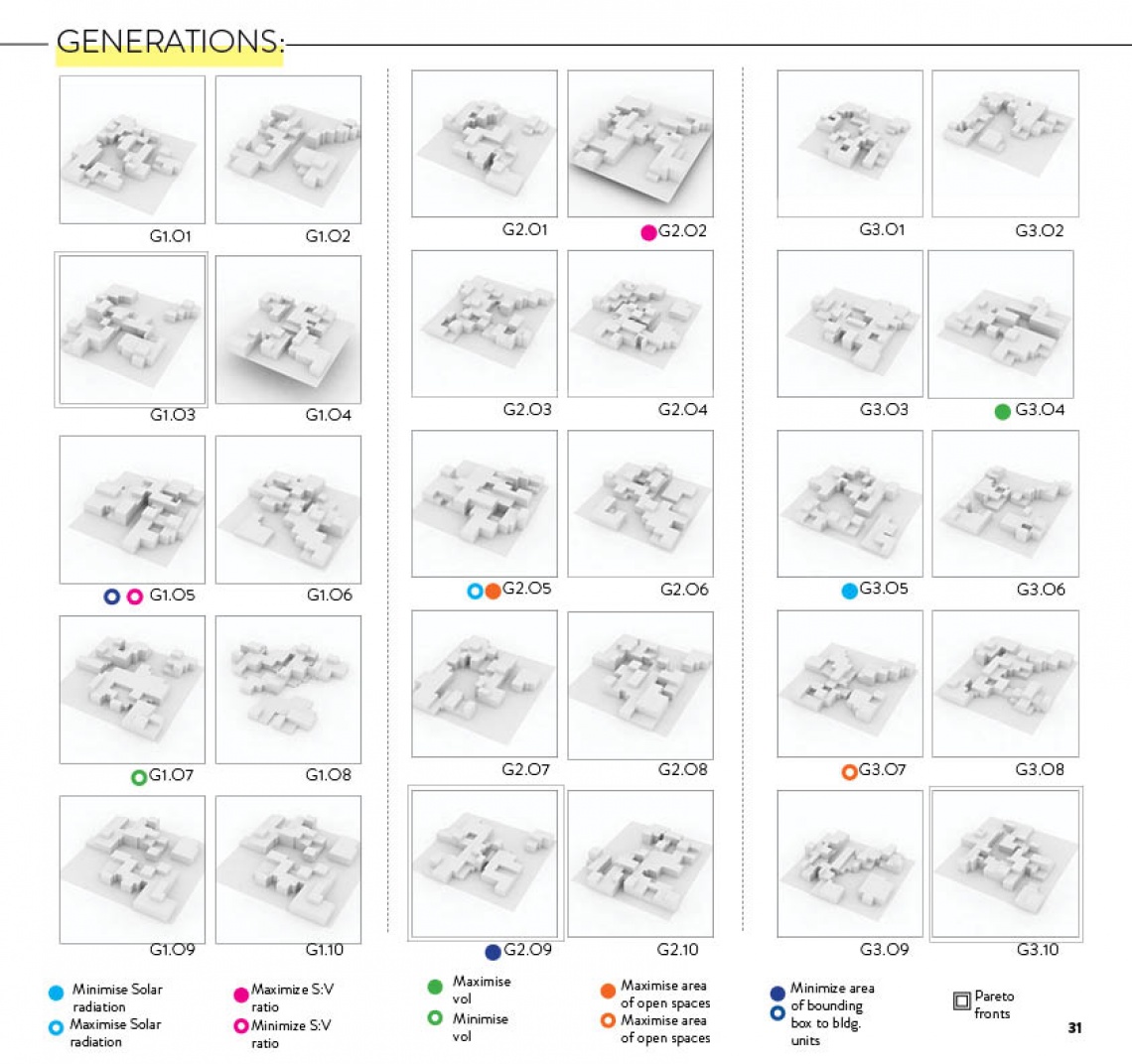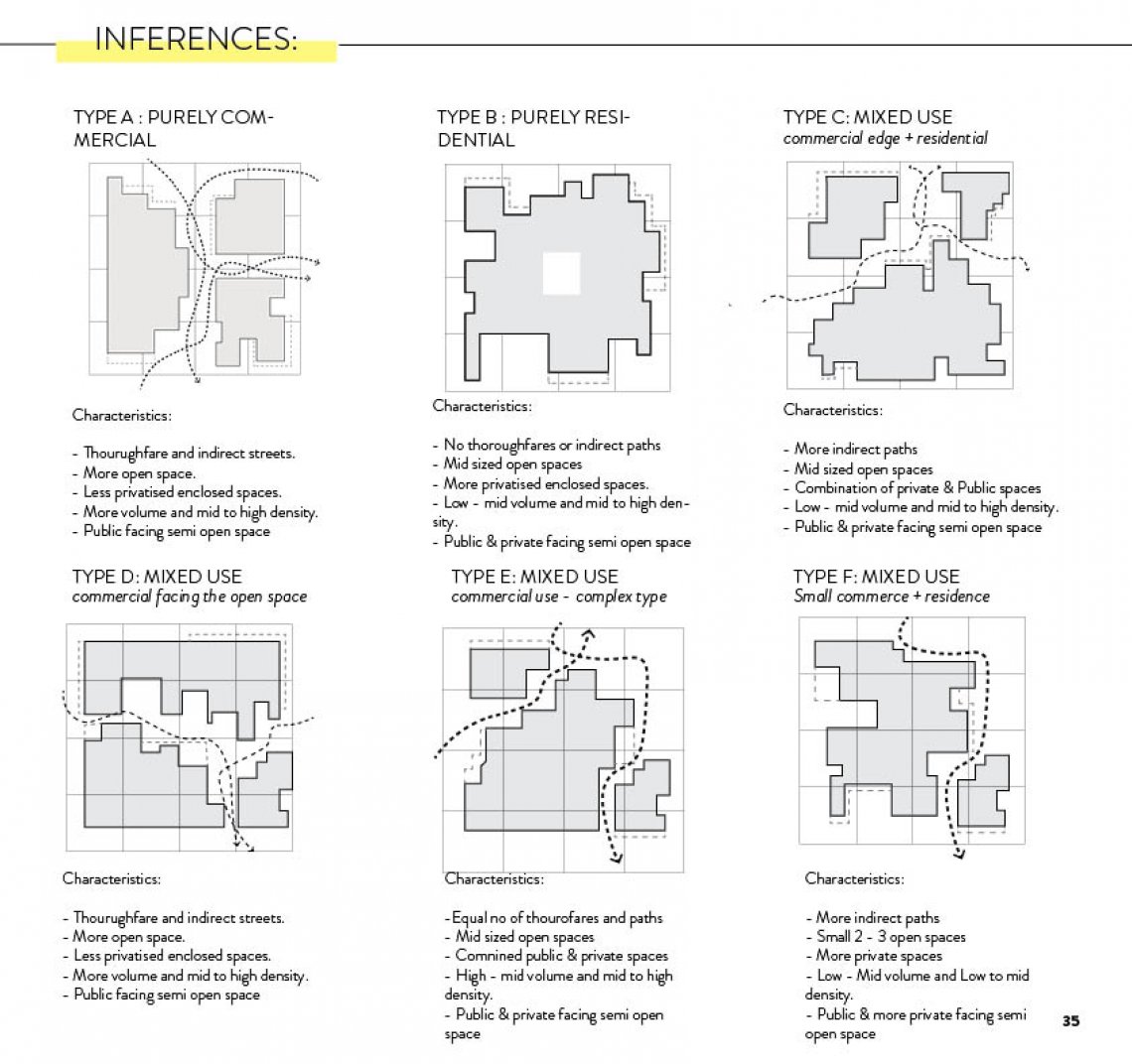Your browser is out-of-date!
For a richer surfing experience on our website, please update your browser. Update my browser now!
For a richer surfing experience on our website, please update your browser. Update my browser now!
The project essentially deals with introducing permeability in the green belt at network level as well as at block level. In terms of network, a street hierarchical network is been introduced such that the primary level attractors and secondary level attractors each having its own influence radius have better access to reach and proximity to the transportation network. This was then run on octopus with the shortest walk plugin and refined with the help of space syntax. The gap between these two networks is filled by a decentralized commercial network which serves as activity spots for these attractors and makes the neighborhood lively. Whereas, for the blocks, permeability was introduced in terms of spaces and the orientation of built form as well as streets. Shastrinagar was referred as a case study upon which the basic parameters for my design were extracted which were: hierarchy of open spaces, built to open relationship, climatically responsive spaces. Thus, the block was then designed in such a manner that the built form may or may not be divided further to form internal network, open and semi open spaces were introduced as well as more surface to volume was created for better activity spots. These parameters were then run on octopus to give a variety of individuals and were then further evaluated to give building use to each one of them, which were then placed on the green belt.
